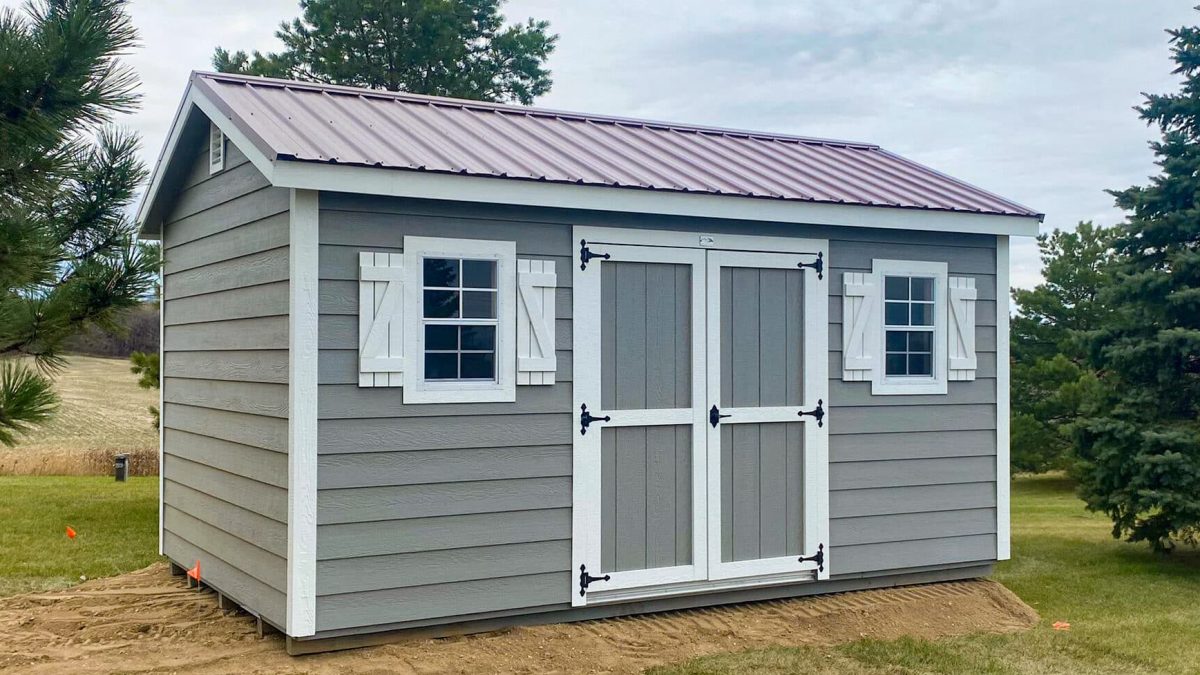
Essential Features To Consider When Building A Storage Shed
Introduction
Introduction
Building a storage shed is more than just hammering a few boards together. It’s about creating a practical, secure spot that fits your lifestyle, meets your storage requirements, and complements your home’s look. In this blog post, we’ll explore everything you should keep in mind when planning and constructing a backyard storage building. We’ll discuss council regulations in Australia, essential shed specifications, step-by-step design tips, and simple ways to maintain your new structure over the years.
Why A Storage Shed Is Worth The Investment
Many people think a shed is just somewhere to hide clutter, but it can actually be a fantastic addition to your home’s functionality. It offers a dedicated space for items you don’t want lying around indoors, plus it helps protect your belongings from Australia’s diverse weather conditions. You’ll also free up space in your garage or spare room, which can be a genuine lifesaver if you’ve been battling against mountains of stuff.
Beyond storage, building a storage shed can increase the resale value of your property if done properly. Potential buyers often appreciate having extra overhead storage or a spot to keep everything neat and tidy. If you decide to sell in the future, your well-planned storage setup can become a strong selling point.
Common Uses And Benefits
Storage sheds aren’t a one-size-fits-all solution. Some folks rely on them for storing lawnmowers, gardening gear, or kids’ bikes. Others use them as mini-workshops, where they can tinker with tools and enjoy a personal workspace away from the main house. You might also discover creative uses, such as a small art studio, a hobby room, or a place to house sports equipment.
No matter how you use it, a well-built shed keeps everyday clutter at bay. It means less frustration when you’re searching for that weed trimmer or trying to find the perfect place for your power drill. Plus, when your tools and supplies are in one secure area, you’re more likely to keep them clean, well-maintained, and ready for action.
Building A Storage Building: Planning And Construction
From Blueprints To Final Assembly
Proper planning goes a long way in avoiding surprises. Start by drawing up or purchasing blueprints that outline precise measurements, materials, and assembly steps. If you’re not confident in your drafting skills, you can often find free or low-cost shed plans online.
The construction phase typically includes laying the foundation, building the frame, installing the walls, and adding the roof. Follow each step methodically, checking your measurements as you go. Rushing can lead to misalignment or stability issues. Once the main structure is up, attach doors, windows, and any finishing touches like paint or stain to protect against the elements.
Choosing DIY vs. Hiring Professionals
One of the biggest decisions in building a storage building is whether to roll up your sleeves or hire builders. For keen DIY-ers with the right tools, doing it yourself can be rewarding. You have full control over design tweaks, material choices, and the final look. Plus, a hands-on approach might save you money—provided you know what you’re doing.
However, if you’re short on time or not confident with carpentry, hiring professionals can spare you stress. Pros bring a wealth of industry experience, ensuring everything is level, well-built, and up to code. The cost might be higher, but you’re often paying for speed, expertise, and peace of mind. In many cases, the best route is somewhere in the middle: do simpler tasks yourself and outsource more complex steps, like laying concrete or erecting structural frames.
Managing Costs And Avoiding Common Pitfalls
Budget overruns can sneak up on you if you’re not careful. To steer clear of surprises, compare prices for materials—like timber, metal sheets, or composite panels—and watch for sales. If you’re hiring help, get multiple quotes to ensure you’re not overpaying. Keep a small buffer in your budget for unexpected issues, like discovering inadequate soil stability or realising you need a better door lock.
Alongside finances, be mindful of common construction pitfalls. Improperly levelled ground or a rushed foundation can lead to sagging floors or jammed doors. Overlooking council rules might land you in hot water down the line. By meticulously planning and pacing yourself, you’ll avoid these headaches and end up with a sturdy, functional shed.
Conclusion
Building a storage shed is an exciting project that, with a bit of planning, can pay off for years to come. It’s critical to confirm any council regulations before you invest in materials. Also, look after the basics: a sturdy foundation, suitable materials, and an efficient layout. Getting these steps right ensures you won’t face structural problems or regrets in the future.
